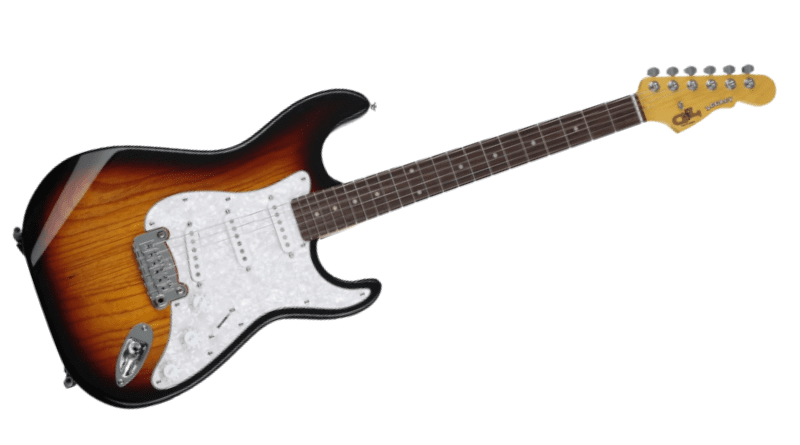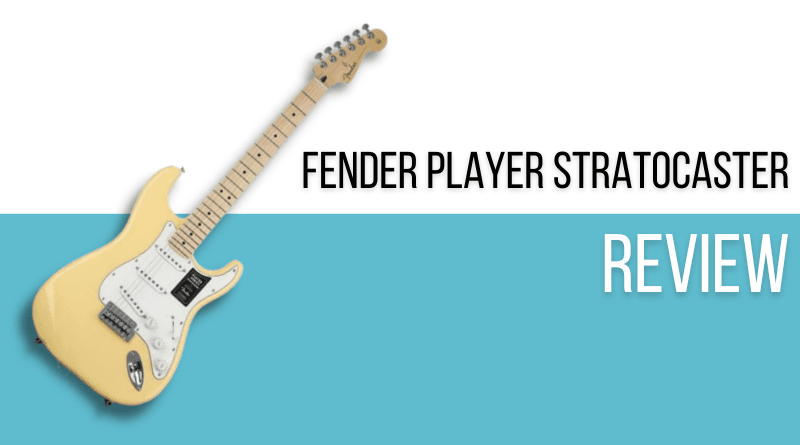The Fender Stratocaster has been with us for a long time, since 1954 to be exact. In that time, it ‘s become not only one of the most popular guitars, but also one of the most important pop culture symbols in the zeitgeist of the music industry.
Fender, and Squier by proxy, make dozens of variations on the Stratocaster today, ranging from bare-bones entry-level models to custom shop guitars and reissues that cost tens of thousands of dollars. In this KillerGuitarRigs Review, we’ll be looking at the most affordable Fender-branded version of the Strat, the Fender Player Stratocaster.
The Player Strat is often compared to the likes of the Squier Classic Vibe series in terms of quality, so we really wanted to find out whether it justifies the proportionately steep jump up in price over the CV. Keep on reading to find out.
Read more about our review process.
Contents
Who Is This For?
The Fender Player Stratocaster is the new name for the old Mexican Standard Strat. It’s a rock-solid guitar that works for every level of player, from beginners with a bit more money to spend to professional guitarists who need a reliable platform that doesn’t cost a lot to buy and maintain.
Appearance / Features / Controls
One of the coolest things about the Player Series is that they come in tons of color options. Our test guitar was finished in one of our favorites – Buttercream. It had a gorgeous vintage look that suited the style perfectly. If Buttercream isn’t your thing, there are 7 other colors to choose from.
Southpaw players will also be pleased to know that it also comes in a left-handed version, too.
Construction materials were typical for the model. It came with an alder body, which has become one of the most commonly used woods at Fender since they stopped using ash. It was lightweight and responsive, so we had no complaints about the choice of wood.
The neck was maple, and had a fantastic Modern C shape. It was comfortable and quite fast playing, partially thanks to the satin finish. It had 22 medium jumbo frets, which really suited the neck well. We found the frets were nicely finished, with a good polish, smooth ends, and well leveled crowns.
It had a 2-point trem system, which was a big improvement over the old 6-point found in the Mexican Standard that preceded this model.
As for electronics, it came with a standard Strat-style SSS configuration and made use of high-quality Fender Player Series Alnico V pickups, with CTS pots for the volume and tone controls. One of the coolest features about the wiring was the tone control layout, which was set up so that the top knob worked the neck and middle, and the bottom knob controlled the bridge. Most Strats have no tone control for the bridge, so this really opens up a lot of tonal opportunities.
Performance/Sound
Being a Stratocaster, it was incredibly comfortable to play from any position. Standing, sitting, however you like. This is largely due to a combination of low weight, and the fantastic contour body. The test model we received was 7lbs, 9oz, which felt just about perfect.
Because it was so comfortable, playability from the factory was superb. It had a super comfortable 9.5”-radius fretboard that worked well with the low string height. It allowed expressive playing, but we didn’t find any choke-out points on the neck.
We really liked the tones we got from the Player Strat. The pickups were a big step up from the ceramic ones found on the old Standard, and did a better job of delivering the expected range of Strat sounds.
In the neck we got a full-bodied, well-rounded tone packed with warmth while retaining decent clarity. In the bridge position, we found it to be super chimey, with tons of bite when overdriven hard. The middle pickup on its own didn’t deliver anything particularly interesting, but when used as a support for the neck or bridge in the 2 and 4 positions, it came to life. The 4 position (between the neck and middle) is arguably the most underrated on the Strat, and it sounded incredible when played fingerstyle without picks.
Having the ability to actually control the tone in the bridge position also made a world of difference. Being able to dial back the brightness just a touch gave us a much fatter tone without losing the sparkle. This was absolutely one of the most outstanding upgrades that came with the Player Series.
The trem system was good. The 2-point bridge had no issues with floating and returned to the neutral position every time without causing issues with intonation or tuning stability. This makes it much more usable than the 6-point trem you get with something like a classic Vibe Squier.
Other Guitars to Consider
The Fender Player Stratocaster is a fantastic guitar and we’d gladly recommend it to anybody looking for a guitar in this style. However, if you’d like to consider some alternative options, fortunately there are lots to choose from.
G&L Tribute Legacy

After Leo left Fender, he went on to co-found G&L, and many say it’s there that he did his best work. The G&L Tribute Legacy is the Stratocaster-style guitar he made at G&L and it’s packed with some fantastic features. The Dual Fulcrum vibrato bridge system, for example, is widely considered to be far superior to the Fender Synchronized Tremolo. It features similar alnico single-coil pickups, with wonderful vintage voicing, and it costs significantly less than the Fender.
Squier Classic Vibe ’70s

The Squier Classic Vibe ’70s is the flagship model in the Squier lineup, and as such often finds itself compared to the Player Series. Like the Player Series, it’s a genuine Stratocaster with a full-size body, but rather than being a modern-style guitar, it’s designed to perform more like a vintage model from the 1970s. It features quality alnico pickups that sound fantastic, but unfortunately like many Strats, it lacks the bridge tone control.
Final Thoughts on the Fender Player Stratocaster
It’s hard to feel anything but love for the Fender Player Stratocaster. It performed brilliantly throughout our testing. Despite being quite a bit more expensive than its closest competition, it still offers great value for money when you consider you’re getting it’s a stage- and studio-ready Fender for well under $1,000. Guitars like the Squier Classic Vibe series come close, but in terms of everything from tone control to playability, the Fender is the clear choice.


